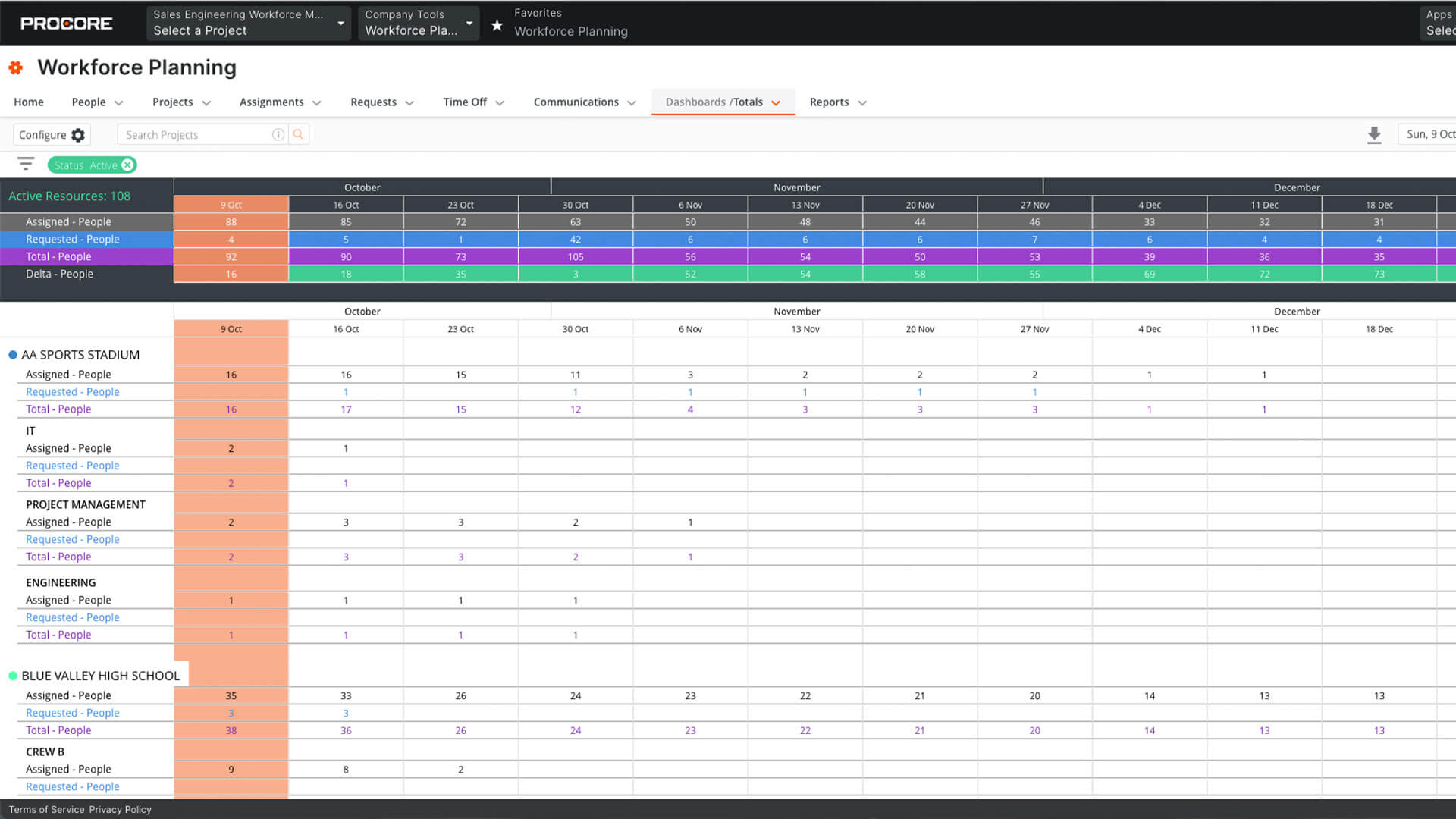
Article
How to Beat the Construction Labour Shortage with Construction Workforce Management
A guide to help you overcome the problems associated with the current Construction Labour Shortage in Australia and New Zealand
Want to learn more? We’re here to help
In 2023, Australia continues to see a shortage of skilled labour. Affecting all industries and depleting labour resources, it shows no signs of diminishing any time soon, leading to more avoidable issues with detrimental impacts.
This is due to the unemployment rate notably decreasing to 3.4% in 2022, the lowest rate in over 50 years, according to the Australian Bureau of Statistics. Like many industries, the construction industry in Australia is forecast to see the labour shortage get worse before it gets better, as we continue into 2023.
There were considerable (and unprecedented) reasons that triggered the high demand for skilled and specialised workers. For one thing, the COVID-19 pandemic caused significant disruptions in the labour market, leaving it skewed toward a surplus of jobs and a shortage of workers.
Also, rigorous border control in Australia led to a decrease in travelling workers and students, leaving the Australian workforce in skeletal conditions. As the world creeps toward a new normal with little labour growth, companies across the nation are using new approaches to fill specialised jobs and keep their businesses going.
Chapter 1
What does the labour shortage mean for the construction industry?
For the construction industry, a labour shortage can lead to a swarm of avoidable issues, such as increased workplace injury, extensive project delays, risky quality control and higher builder risk costs.
According to the 2022 Arcadis Construction Costs Index Report, specialised and skilled worker vacancies have risen by 80% since late 2019. The report forecasts that in 2023 there will be more than 100,000 unfilled roles in the industry.
Battling the construction industry labour shortage will be a persistent challenge faced by construction companies in 2023, and likely for the rest of the decade. But, with transformation comes adaptation. The most successful companies will be the ones who are investing in their future by investing in their most important commodity: their team.
Chapter 2
How to combat labour shortages in construction projects
To beat the construction labour shortage in Australia, companies are strengthening from the inside out to protect their companies.
About 4 in 10 businesses are experiencing significant impacts from labour shortages, according to research from National Australia Bank. But with the right strategies in place, 90% of leading construction businesses forecast that they will have a sufficiently skilled workforce in the next 12 months.
Construction companies are investing in their employees through diverse training approaches and are initiating employee expansion with modern recruitment tactics to reach skilled workers.
Investing in existing construction employees
Companies investing in their employees are investing in their success.
Employee training is particularly important for the construction industry, from improving your compliance with safety standards to reducing workplace injury. A lack of training may result in serious or fatal workplace mishaps.
With effective learning, development and training, your workers are able to better accomplish the job they were trained for and learn about the jobs and roles they will be able to accomplish in the future.
Robust training
By investing in workers and their growth, you can unlock many benefits within your workforce. Actively-engaged workers who are learning and bettering their skills have improved productivity and processes, which ultimately boost the bottom line.
According to this study by TeamStage, companies that invest in employee training have a 24% higher profit margin.
Diverse and practical training offered to workers can also reduce turnover and attract new talent. Further, bettering existing skills and learning new skills have become increasingly important characteristics that specialised and skilled workers look for in prospective companies. Providing blueprints for progress can give companies a significant hiring advantage during Australia’s construction labour shortage.
Become an employer of choice
Companies that are able to attract workers are able to fill specialised roles faster. In 2023, recruitment tactics look like more than just for-hire ads; companies are spending more time evolving into an employer of choice.
Here are some different methods to help you become an employer of choice:
Offer learning and development opportunities to employees for growth and professional training.
Include intriguing benefits and bonuses in hiring packages that attract the type of specialised worker you require.
Encourage meaningful work-life balance and actively check in with your employees about their well-being and fulfilment.
Spend less time chasing, and more time creating, a great workplace that attracts the best-suited workers for your company.
Team collaboration and communication
Effective communication with your workers is necessary if you want to strengthen your workforce and boost company culture to attract new workers. Managers and employees have the opportunity to learn from each other, allowing meaningful communication and collaboration to flourish among the team, strengthening company culture.
And in today’s construction industry, a combination of strategy and technology is making it easier than ever for skilled employees to achieve and maintain a collaborative company culture.
Technology streamlines many processes in construction companies. In this case study, a head contractor firm increased productivity across every team member to 92% and increased their revenue by 17% when they had access to the right tools and information by using construction management software.
Expand your construction recruitment tactics
In 2023, the construction labour shortage in Australia is challenging companies to hire new talent and fill specific jobs and roles within their organisation. Here are useful recruitment tactics to effectively expand your construction workforce.
Job fairs – There are job fairs happening constantly, from multiple-industry fairs to industry fairs specifically for the construction industry. Find out which fairs can help you, and take action on your recruitment.
Recruit the next generation of construction workers – Unleash the power of the next generation by utilising student internships, presentations/job fairs and job postings at high schools. You can also connect and partner with trade schools for recruitment purposes.
Word of mouth – Happy workers are the workers who tell their friends and neighbours about the amazing company they work for: yours. And happy clients do the same. Utilise word-of-mouth tactics in your recruitment process by getting your network involved.
Modernise recruitment – Word-of-mouth can extend beyond, well, word-of-mouth, with more modern recruitment tactics such as social media. Reach a larger audience by meeting them where they are.
Hire recruitment agencies to attract construction workers – Hire specialised people to find specialised workers. Recruitment agencies are beneficial when your vacancy has a very specific seat to fill.
Build your reputation by defining a positive company culture – Culture helps business solve problems. Your company’s values, mission and vision creates your culture and can attract workers (even from non-traditional backgrounds such as software or finance). Strong company culture not only attracts workers, but keeps them around, too.
Build upward through professional development and outward with modern recruitment tactics and technology to reach skilled workers.
Chapter 3
How Workforce Management Software can reduce your risk of labour shortages
Let workforce management software take care of your people while you take care of the work.
Effective construction workforce management lets you take a bird’s-eye view of your team’s current labour processes from end-to-end and hold your command centre at your fingertips – giving you more time to get back to the job.
Construction workforce management software can optimise processes by centralising scheduling and communication with real-time insight into your workforce's availability and skill set.
You can ensure that all members of your workforce are informed and armed with the right information to get the job done. Your team will always be set up for success, and you can reduce your risk of labour shortages with construction workforce management software.
Improve forecasting and budget allocation accuracy
Stop losing profits because your labour cost actuals exceed forecasts.
Use historical data to make informed decisions with construction workforce management software and plan costs accurately. This way, you can act quickly and with confidence to make decisions that positively impact your project’s budget and profitability.
Optimise labour productivity
Construction workforce management software gives you and your team access to schedules, roles, allocations, and actionable insights from anywhere.
Identify and define labour gaps early, so your team can stay ahead of recruitment needs in the field or in the office.
With your command centre in your pocket, you can optimise the efficiency of your entire workforce.
Learn more about the six pillars of construction workforce management. Download eBook.
Chapter 4
Start using Construction Workforce Management Software now
By investing in the future, you are investing in the long-term success of your company. Construction companies in Australia are reinforcing their teams and company culture with construction workforce management software.
When you use construction workforce management software, you can manage your people and data, plan and schedule, view analytics and forecasts, and communicate with your whole team.
With Procore’s construction workforce management, you get a digital command centre at your fingertips whenever you need one.
Give your team the right tools and information to get the job done right the first time. Get more done with the same headcount by optimising your existing workforce's productivity and efficiently moving them from job to job.
When you arm your team with Procore, you can achieve cohesive transparent communication and collaboration within your workforce, which can help keep workers employed and position your company for future growth.
Procore users also experience benefits such as centralisation of data, increased accuracy of forecasting, improved communication, and better labour management.
Procore prioritises efficiency and takes care of your most important asset: your people.
Procore will propel you through the 2023 labour shortage and keep your company teeming with skilled workers doing the jobs they were trained for. Put the right person in the right place with the right plans at the right time – every time – with Procore.



